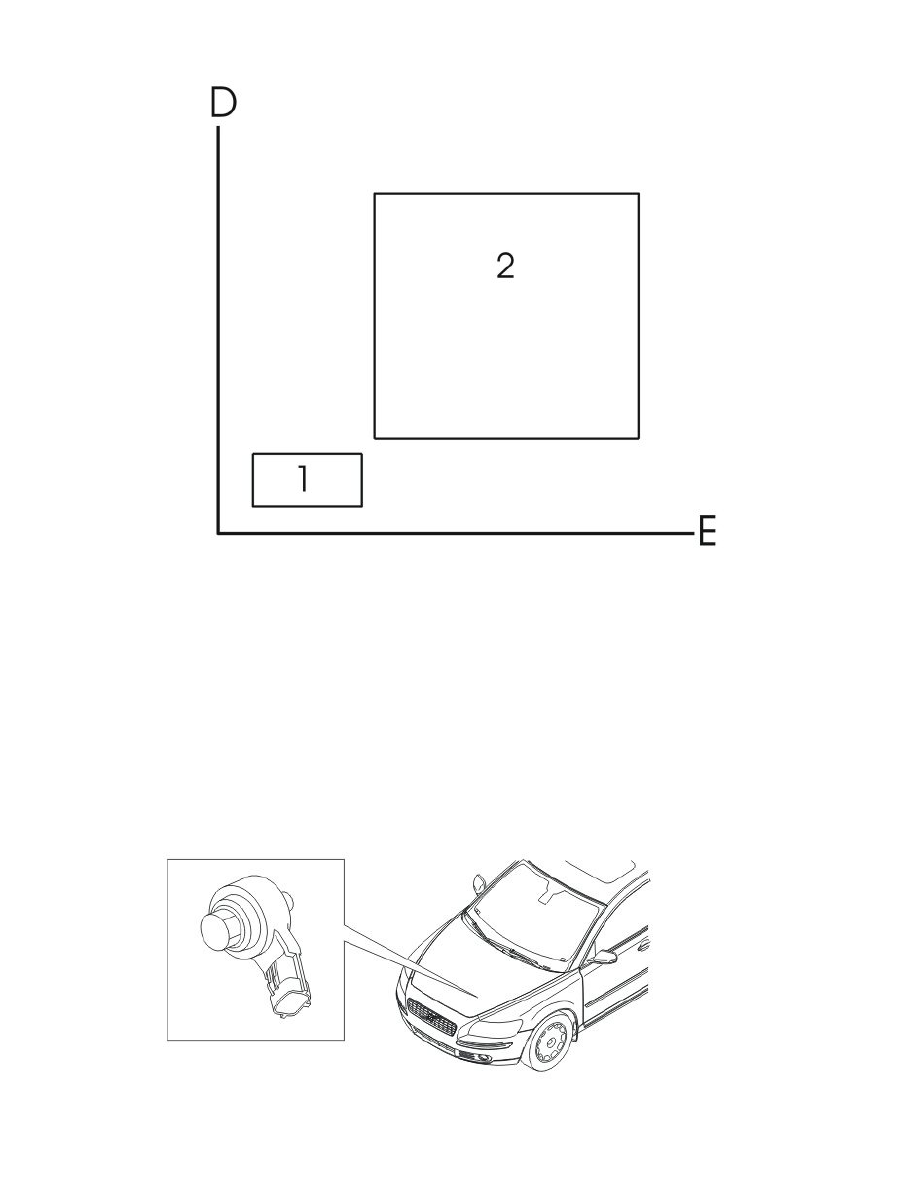V50 L5-2.4L VIN 39 B5244S7 (2005)

The adaptive functions consist of two sections and correspond to the different operating ranges of the engine, load (D) and engine speed (E):
-
Additive adaptation (1) is when the engine is idling. This is how the control module adjusts the CO content at idle speed. Long-term fuel trim,
idling can be read off using VIDA.
-
Multiplicative adaptation (2), carried out at loads and engine speeds above idle. Long-term fuel trim, load can be read off using VIDA.
The adaptive adjustments of the injection period are stored continuously in the control module. This means that under different operating conditions the
fuel air mixture is obtained before the heated oxygen sensor (HO2S) is warm enough to function.
A diagnostic trouble code (DTC) will be stored in the control module if any adaptation value is too high or too low. For further information, also see:
Heated oxygen sensor (HO2S) diagnostic See: Powertrain Management/Computers and Control Systems/Description and Operation/Heated Oxygen
Sensor (HO2S) Diagnostic
Knock control
Knock occurs in the combustion chamber when the fuel and air mixture self ignites. This can occur either before or after the spark plug has produced an
ignition spark. In both cases the gas in two or more places ignites in the combustion chamber.
This results in an extremely fast combustion process with flames from several directions. When these flames collide, the pressure in the cylinder
